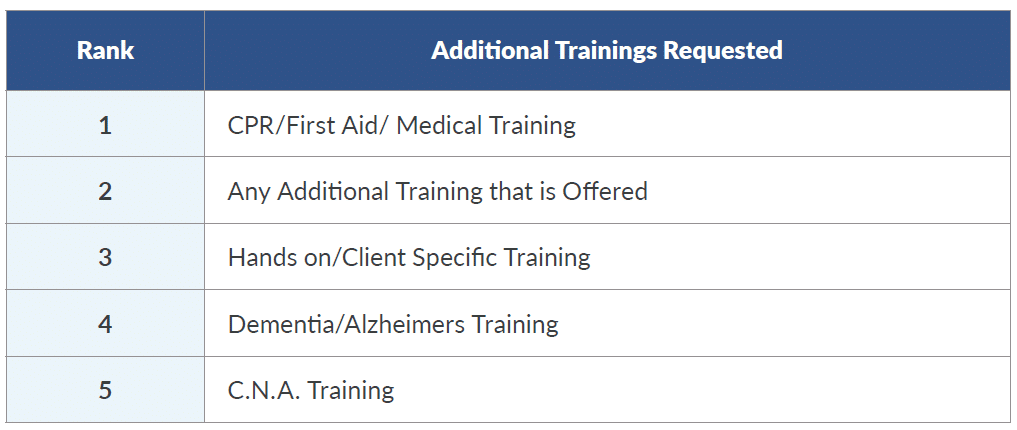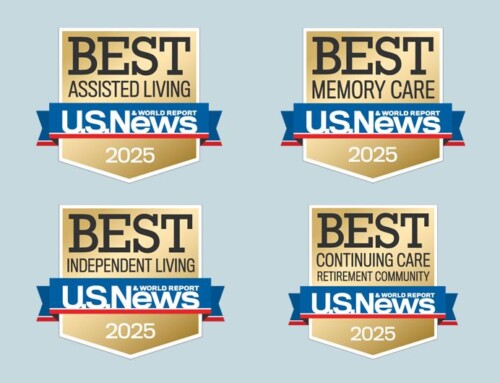5 Ways Your Home Care Office Staff Can Increase Caregiver Retention

Your office staff are well-equipped to help you deal with caregiver turnover. Don’t try to do it all yourself.
There’s a number we talk a lot about at Activated Insights, and that’s the $2,600 that it costs home care agencies, on average, to replace a caregiver. With annual caregiver turnover rates hovering at over 70% in many regions of the United States, these costs add up quickly.
While most home care owners are well-acquainted with the struggles of caregiver turnover, many underestimate the advantages of involving every staff member in the efforts of retaining caregivers.
Here are five ways your home care office staff can help reduce caregiver turnover:
#1: Creating accommodating schedules and assignments
While it may not always be possible to work with every schedule, this is one of the most important ways that your office staff can help make your company a place that caregivers want to stay for a long time. In particular, they should focus on:
- LIVE WEBINAR
Nursing Perspectives: How to Prepare for the Alzheimer’s and Related Dementias Surge
#2: Running consistent, effective training and orientation
Depending on the size and structure of your agency, much of the responsibility of training may fall on your staff.
Holding ongoing trainings is a critical part of retaining and refining your caregivers. Investing in them through training makes them more effective in their work, helps them feel more satisfied in their work by making them more capable and increasing their professional value, and ultimately sets your business apart from competitors.
A few best practices that your staff should follow in giving trainings to caregivers:
Here are the top 5 types of training caregivers in the industry want to receive, according to the 2018 Home Care Benchmarking Study:

Note that the second most popular response is simply “any additional training that is offered.” Your caregivers are hungry for more training; they want to become more skilled, more capable, and more valuable in their profession. Here are some other ideas on training topics that may be useful:
#3: Providing specific, frequent recognition
As we’ve addressed before, caregiver recognition was the home care industry’s lowest caregiver satisfaction score last year. This data from the Home Care Benchmarking Study shows the top five types of recognition caregivers want to receive:

While there’s no substitute for receiving recognition from the company’s top leadership (you), your office staff can help. They typically have more opportunities than you to interact with your caregivers, and recognition has a greater effect when it comes from multiple people and through multiple channels.
Encourage office staff to recognize caregivers for their hard work and accomplishment at spontaneous times, but also put systems in place to ensure that they consistently validate caregivers for their work. Consider the following ideas:
#4: Helping your caregivers feel like a part of the team.
Set the example for your staff by learning about each caregiver, remembering their names, and engaging with them.
It’s true that high turnover can make doing this difficult, especially for staff members like your Outreach Director who might not have regular occasions to see or interact with your caregivers.
It is, however, important. Everyone likes being remembered. Imagine how it feels as a caregiver, coming in to the office for a training or other meeting, and a higher-level team member you haven’t spoken to much recognizes you, greets you by name, and talks to you. While it’s a small thing, it can go a long way toward helping someone feel like part of the team.
TIP: Consider posting an organizational chart somewhere public that has a picture of every caregiver with their name and other unique or interesting facts about them. This will help your staff stay more familiar with your caregivers, and foster a greater sense of unity.
AUTHOR’S NOTE: when I came to Activated Insights to interview, I had already had one phone interview and was scheduled to meet with members of the marketing and sales teams for a group interview. While I was waiting in the reception area, Aaron Marcum came out of his office and introduced himself to me. I was struck by the fact that the CEO of the company was taking time from his day to come introduce himself to an applicant who was applying for a low-level position and might not get hired anyway. He had also chosen an office that was right at the front of the building, where he could most easily interact with the most people. This is the kind of example and culture you should set in your company.
#5: Communicating the why of your business.
One of the most critical aspects of retention is sharing the vision of your company with your caregivers, and attracting/hiring caregivers who identify with your why. As the organizational tier between you and your caregivers, your office staff play an important part in this process. You can facilitate this by:
Lifting Where You Stand
We’re going to end this on a philosophical note:
The story is told of a group of men struggling to move a grand piano to another room in a building. With the immense weight and uneven weight distribution, they struggled to coordinate enough to move it at all. After various attempts to lift and reposition themselves to better handle its weight, they were unable to make any headway. Finally, an older man in the group said simply, “Stand close together and lift where you stand.” While they almost rejected such a simplistic idea, they followed his instructions and found that positioned more closely together, their combined strength was more than equal to the task. The piano moved smoothly into the next room as if by its own power.
This illustrates an important leadership principle: individuals with different skill sets, working in different capacities, can accomplish a great deal through a united effort. Each of your staff, working in different positions, are uniquely positioned to help your agency deal with caregiver turnover—and each may be able to do so in unexpected ways.
We publish a new article every week. If this was useful to you, don’t forget to subscribe to our email list to get more articles like it.
How has your staff helped your agency deal with caregiver turnover? Let us know in the comments below!









